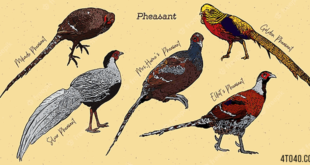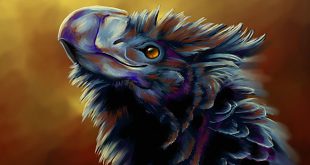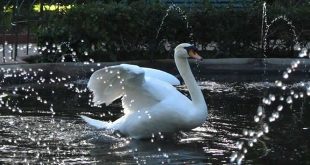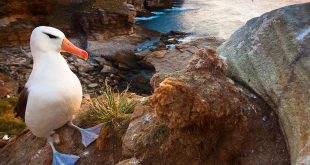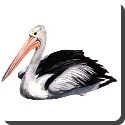 Pelican — A pelican, is a large water bird with a large throat pouch, belonging to the bird family Pelecanidae.
Pelican — A pelican, is a large water bird with a large throat pouch, belonging to the bird family Pelecanidae.
Along with the darters, cormorants, gannets, boobies, frigatebirds, and tropicbirds, pelicans make up the order Pelecaniformes. Modern pelicans, of which there are eight species, are found on all continents except Antarctica. They primarily inhabit warm regions, though breeding ranges reach 45° south (Australian Pelican, P. conspicillatus) and 60° North (American White Pelicans, P. erythrorhynchos, in western Canada). Birds of inland and coastal waters, they are absent from polar regions, the deep ocean, oceanic islands, and inland South America.
Pelicans are large birds with large pouched bills. The smallest is the Brown Pelican (P. occidentalis), small individuals of which can be as little as 2.75 kg (6 lb), 106 cm (42 in) long and can have a wingspan of as little as 1.83 m (6 ft). The largest is believed to be the Dalmatian Pelican (P. crispus), at up to 15 kg (33 lb), 183 cm (72 in) long, with a maximum wingspan of 3 meters (nearly 10 foot). The Australian Pelican has the longest bill of any bird.
Pelicans swim well with their short, strong legs and their feet with all four toes webbed (as in all birds placed in the order Pelecaniformes). The tail is short and square, with 20 to 24 feathers. The wings are long and have the unusually large number of 30 to 35 secondary flight feathers. A layer of special fibers deep in the breast muscles can hold the wings rigidly horizontal for gliding and soaring. Thus they can exploit thermals to commute over 150 km (93 mi) to feeding areas.
Pelicans rub the backs of their heads on their preen glands to pick up their oily secretion, which they transfer to their plumage to waterproof it.
The pelicans can be divided into two groups: those with mostly white adult plumage, which nest on the ground (Australian, Dalmatian, Great White, and American White Pelicans), and those with gray or brown plumage, which nest in trees (Pink-backed, Spot-billed, and Brown, plus the Peruvian Pelican, which nests on sea rocks). The Peruvian Pelican is sometimes considered conspecific with the Brown Pelican.
The diet of a Pelican usually consists of fish, but they also eat amphibians, crustaceans and on some occasions, smaller birds. They often catch fish by expanding the throat pouch. Then they must drain the pouch above the surface before they can swallow. This operation takes up to a minute, during which time other seabirds are particularly likely to steal the fish. Pelicans in their turn sometimes pirate prey from other seabirds.
The white pelicans often fish alone; the black pelicans are more social. They will form a line to chase schools of small fish into shallow water, and then scoop them up. Large fish are caught with the bill-tip, then tossed up in the air to be caught and slid into the gullet head first.
The Brown Pelican of North America usually plunge-dives for its prey. Rarely, other species such as the Peruvian Pelican and the Australian Pelican practice this method.
Pelicans are gregarious and nest colonially. The ground-nesting (white) species have a complex communal courtship involving a group of males chasing a single female in the air, on land, or in the water while pointing, gaping, and thrusting their bills at each other. They can finish the process in a day. The tree-nesting species have a simpler process in which perched males advertise for females.
The symbol is used today as the national bird of Sint Maarten and features on its coat of arms. It is also used on the Louisiana state flag and Louisiana state seal, as the Brown pelican is the Louisiana state bird. The pelican is featured prominently on the seals of Loomis Chaffee, Louisiana State University, and Tulane University, and is also the mascot of Tulane. A pelican logo is used by the Portuguese bank Montepio Geral.
 Kids Portal For Parents India Kids Network
Kids Portal For Parents India Kids Network
